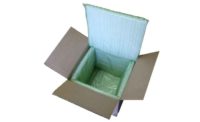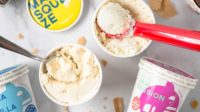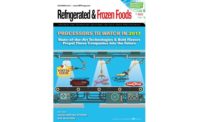The year 2020 will likely be remembered for its perpetually morphing business environment necessitating many crucial short-term decisions by processors to keep up with the pandemic.
As we look to 2021, companies that have stabilized—relatively speaking—and understand how to navigate our current cold chain territory will start to look again toward long-term goals and a growth strategy informed by their core business plans and mission statements rather than what COVID-19 brings on a week-to-week basis.
With that in mind, here are four evolving processors we’ve identified as successfully executing their long-term goals with unwavering focus. In their own words, they tell us a bit about where the cold foods processing industry is heading as well.
(These interviews have been edited for brevity and clarity).
Bowery Farming
Carmela Cugini, Chief Revenue Officer
How it began: Bowery Farming, the largest U.S. indoor vertical farming company, was founded in 2015 by CEO and Founder Irving Fain with the belief that technology and human ingenuity can grow better food for a better future. A seasoned entrepreneur, Fain saw an opportunity to build an agriculture company that gives back more to the people and planet than it takes.
At a Glance
BOWERY FARMING
HQ: New York City
FOUNDED: 2015
DISTRIBUTION: 680 stores in the Northeast and Mid-Atlantic regions, plus e-commerce
PRODUCTS: Indoor-grown produce
EMPLOYEES: Declined to answer
FINANCIAL GROWTH: 600% YOY retail sales, e-commerce sales doubled since January 2020
Bowery began with the understanding that agriculture sits at the core of many global issues today. Industrial farming has caused the loss of 30% of arable farmland in the last 40 years, and we need to produce more food in the next 30 years than we have in the last 10,000 to feed our growing population.
Why we’re different: Bowery’s two core proprietary systems are the farm and the BoweryOS. Both combine proprietary software and automation with industrial process management to optimize the entire production, fulfillment, and distribution of fresh produce from seed to store.
We also innovate in agricultural science. Our R&D team is continuously innovating from seed to shelf. Before growing crops, our team picks seeds for quality and taste, rather than yield and long-haul transportation. We are always experimenting with new varieties, and we test hundreds of new genetics and thousands of recipes per year. We’ve grown hundreds of types of produce to-date, and we’re using breeding techniques to unlock the next generation of crops.
How we use technology: We have built the most highly controllable, automated farms in the world, and are able to scale our operation thoughtfully by tapping into years of data across multiple operations via the BoweryOS. This makes our system increasingly smarter, and in turn, very efficient. As we expand our network of farms, each new farm benefits from this collective intelligence and can communicate using Bowery’s software. By using technology to grow food near the point of consumption, we are simplifying the fresh food supply chain, recapturing that margin, and delivering a product within a couple days of harvest versus weeks of time in the traditional system.
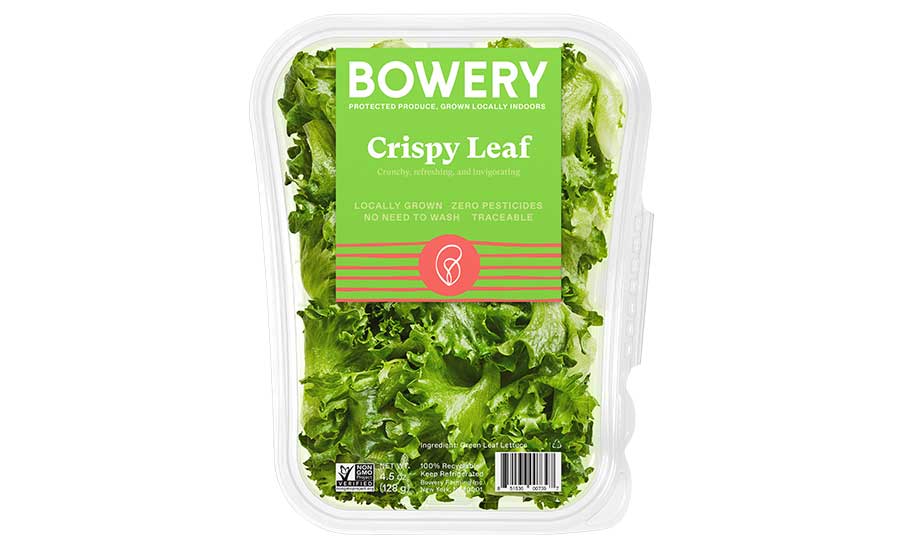
Bowery Farms refreshed its brand logo and packaging in 2020. The company’s Crispy Leaf Lettuce also launched this year.
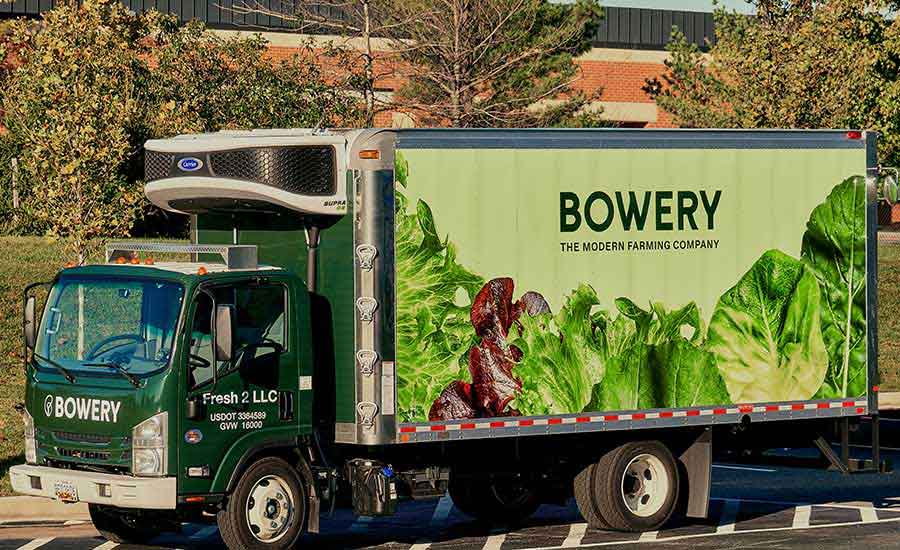
Bowery produce is grown and sold regionally in the Northeast and Mid-Atlantic states at more than 680 stores.
Our sustainability goals: Over 70% of our global water supply goes to agriculture, and over 700 million pounds of pesticides are used each year in the U.S. alone, contaminating our water and causing serious health risks. Additionally, seasonality and varying weather patterns leave traditional farmers with unpredictable yields. Traditional farming methods can also lead to topsoil erosion.
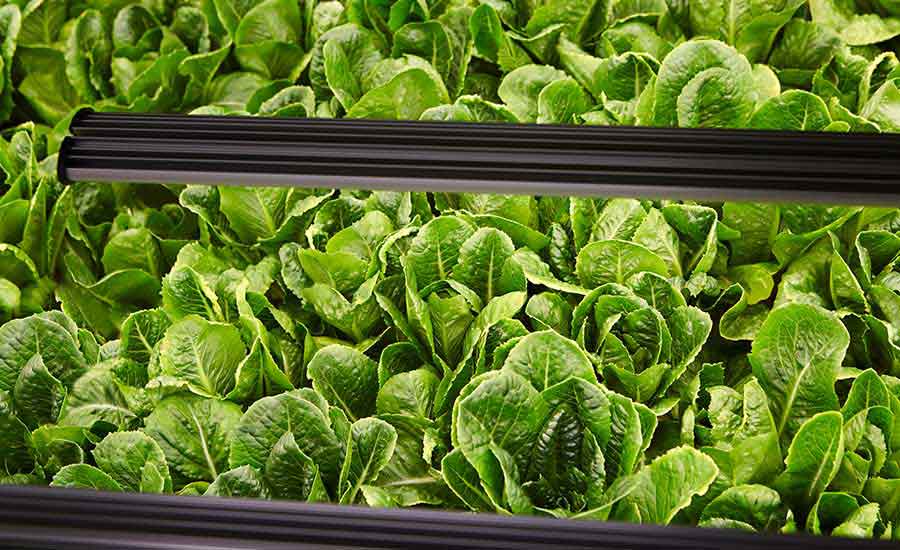
At Bowery, we use a fraction of the water compared to traditional farming methods and eliminate the need for pesticides. Bowery farms are 100 times more productive than traditional farming on the same footprint of land because we grow in vertical stacks, harvest many more crop cycles per year, and achieve a higher yield per crop cycle than the field. All of our energy from our farm in Nottingham, right outside of Baltimore, Maryland is sourced from low impact renewables. We are pesticide-free and our packaging is 100% post-consumable plastic (each clamshell is made with four plastic bottles) and 100% recyclable.
Where we give back: Democratizing access to fresh food has been built into our business model since day one and core to who we are. As the country has experienced staggering rates of food insecurity this year, we donated 45,000 pounds of produce so far to food banks in our local communities including Teens for Food Justice, Table to Table, Maryland Food Bank, and more. We’re also piloting a wholesale model with D.C. Central Kitchen, which through its Healthy Corner Store program brings affordable fresh produce to food deserts in Washington D.C.
Forecast for our future: Our evolution over the past three years and recent brand refresh exemplifies a continued focus on simplicity, surety and safety in the food supply chain and our social impact has never been greater. Bowery has experienced exponential growth over the past year while being very intentional about our approach to scaling. We have more growth initiatives in the works over the next several months, and we’ll continue to be very thoughtful in how we scale to ensure the resiliency of our business and the efficacy of the industry overall.
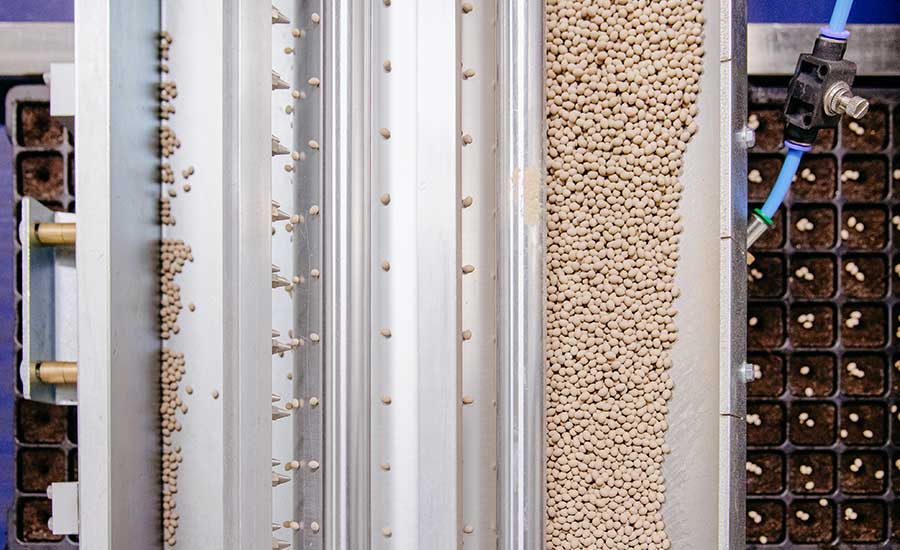
Bowery’s R&D team experiments with new seed varieties to grow different types of produce, unlocking the next generation of crops.
Cadence Kitchen
Alex Klein, Owner & President
How it began: Our company was founded on the realization that the traditional approach to the home cooked meal is failing. Consumers have less time, less access to in-season and free-from ingredients and less desire to cook—only 10% of Americans love cooking. Meanwhile, food waste is skyrocketing, the novelty of meal kit companies is fading, and consumers are looking for that perfect cross-section of variety and convenience when it comes to making food at home.
With this in mind, we saw Western Europe take hold of liquid nitrogen freezing technology for better, fresher and more flavorful frozen food. Owing to the flash-freezing effect this technology offers, food frozen with liquid nitrogen retains more nutrients, consistent texture and better flavor.
At a Glance
CADENCE KITCHEN
HQ: Corona, California
FOUNDED: 2015
DISTRIBUTION: 250 stores nationwide
PRODUCTS: Liquid-nitrogen frozen meals
EMPLOYEES: 75
FINANCIAL GROWTH: 30% YOY sales
Why we’re different: Combining culinary creativity and food science precision, we cracked the code of liquid nitrogen flash-freezing to bring complex meals that would normally take hours to prepare to the dinner table in about 10 minutes. At the start of 2020 we were charting steady growth in our category, but with the onset of COVID-19 we’ve seen a renewed interest in frozen food that has prompted even greater opportunities to innovate our menu and bring consumers consistently fresh, flavorful and enjoyable international cuisines for “dining out at home” as we say here at Cadence Kitchen.
How we use technology: Our technology is the cornerstone of our culinary process and it allows us to innovate with ingredients and recipes that previously could never be considered for frozen cuisine. Our nitrogen flash-freezing approach allows us to “reverse-engineer” recipes, taking incremental steps back from a final, chef-made plate to create a turnkey dish that cooks back to perfection after minutes on the stovetop. Unlike conventional freezing methods that involve artificial preservatives to keep food fresher and artificial colors to make food look fresher, our approach allows us to perfectly flash-freeze food with no artificial preservatives, flavors or colors.
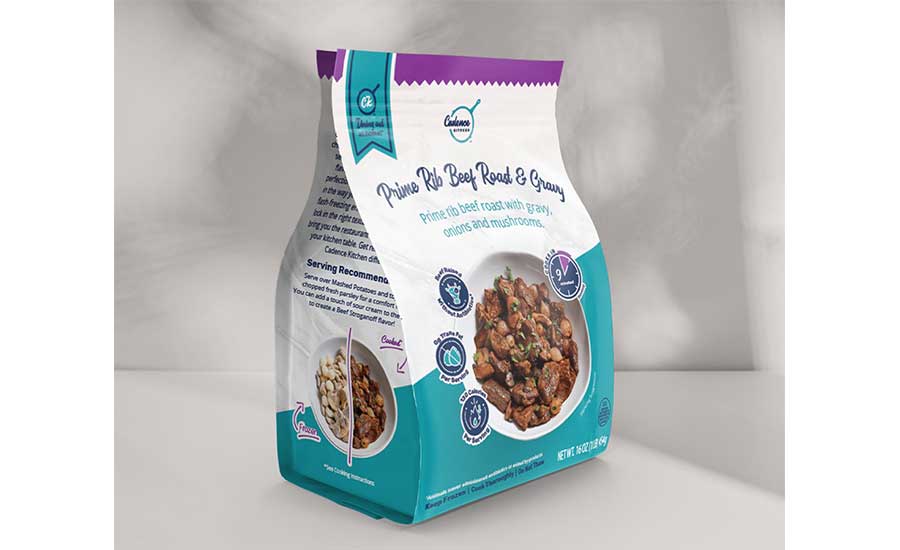
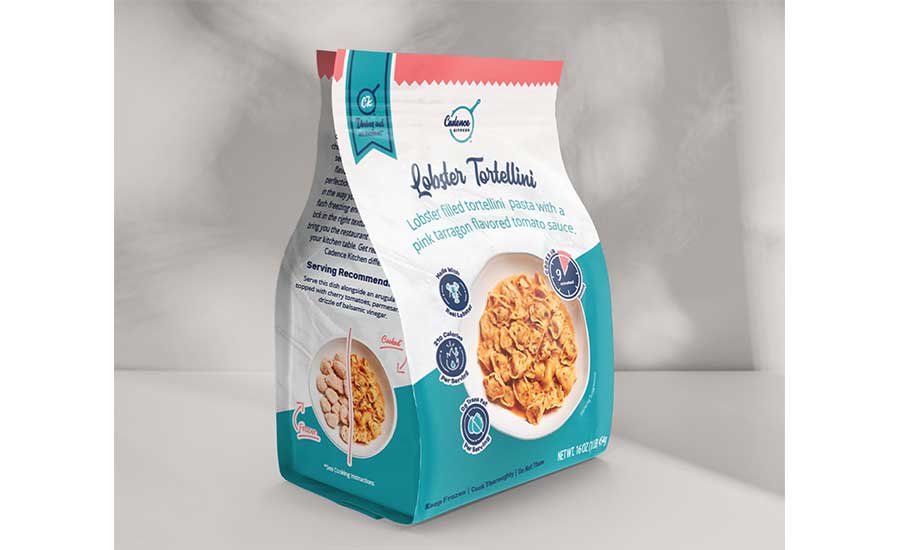
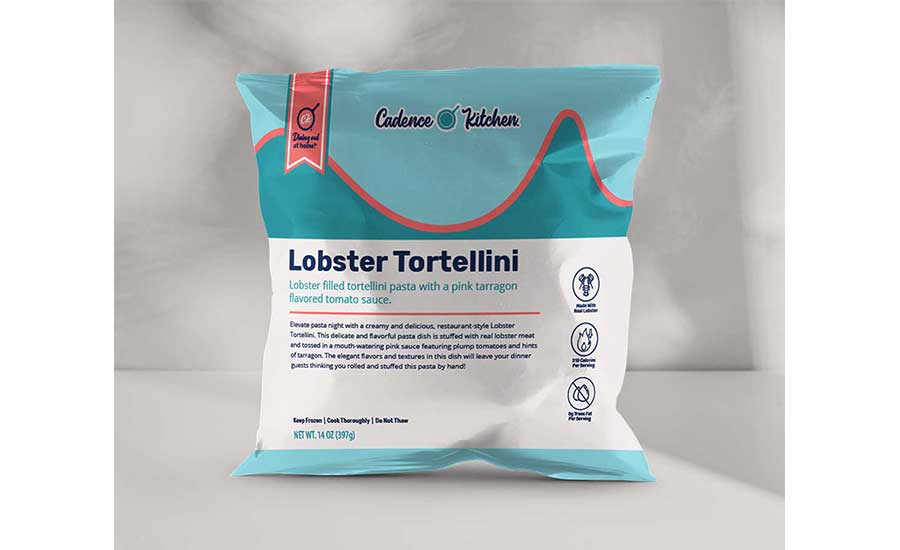
Cadence Kitchen’s products are sold in more than 250 stores using proprietary bunkers on the supermarket perimeter, as well as the freezer aisle.
Our sustainability goals: Flash-frozen food is ripe with benefits, and in many ways it’s better for you and better for the environment. Not only does frozen food offer a much better shelf life, but it also reduces food spoilage and food waste, which is a significant win for sustainability. We also have a commitment to only sourcing sustainable seafood, verifying each vendor to ensure the products they sell to Cadence Kitchen meet our Seafood Sustainability Policy. And, we prioritize antibiotic- and hormone-free meats.
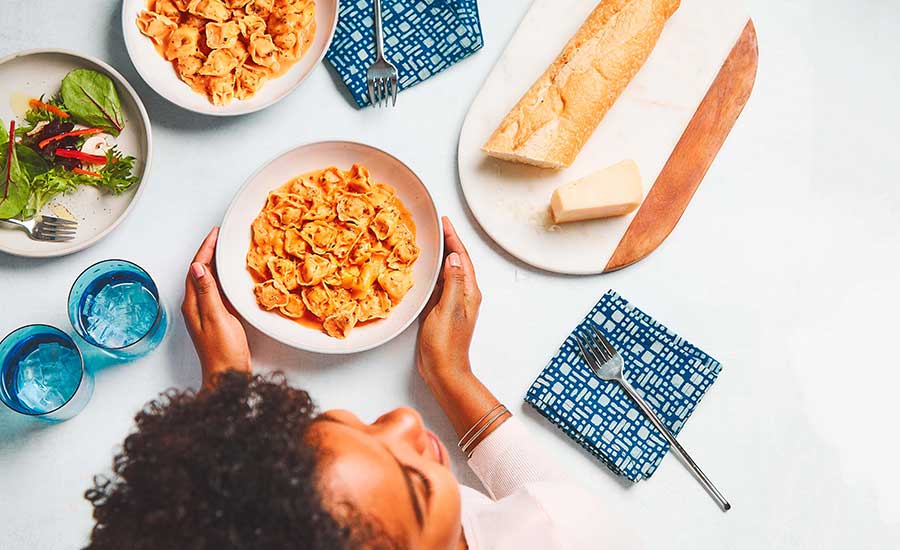
Cadence’s Lobster Tortellini is the company’s top-seller for 2020.
Our top-selling product in 2020: We have been excited to see our sales take off with our new Lobster Tortellini. Our goal was to achieve all the flavors of a lobster bisque, but in a pasta format. The authentic tortellini pasta perfectly envelops wild-caught and sustainably sourced lobster, while the pink tarragon sauce has all the traditional flavors of this restaurant-quality plate. In general, lobster has always been perceived as a “special occasion” meal, but we offer it to our customers at an affordable price while maintaining that elevated feel.
Forecast for our future: We’re always innovating ways to offer more variety and convenience to our customers, better-for-you home dining options and superior flavors and quality, and we will carry this momentum from 2020 straight into 2021. We anticipate continuing to grow our retail partnerships to make Cadence Kitchen available to more shoppers, who we know are busy managing working from home, childcare and limited dining-out options. We’re in the midst of 2021 menu development and look forward to introducing new recipes next spring and fall.
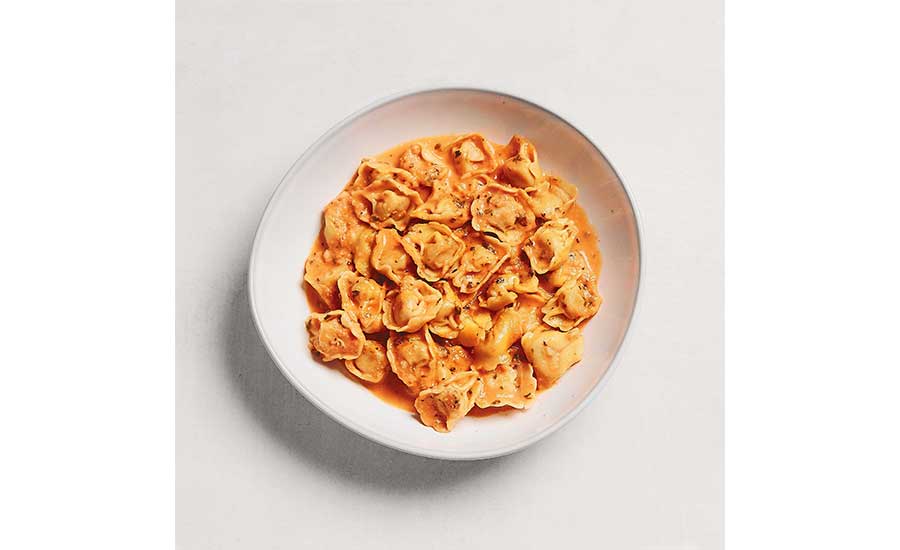
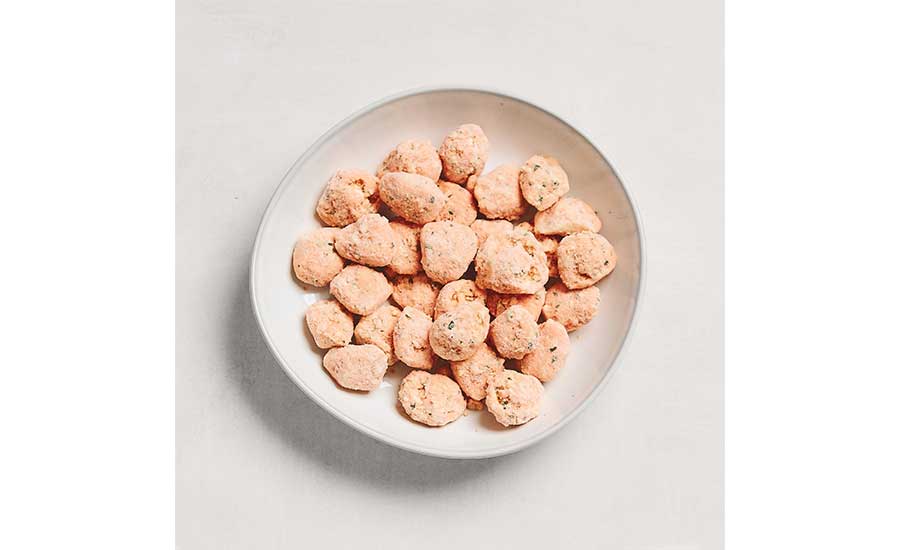
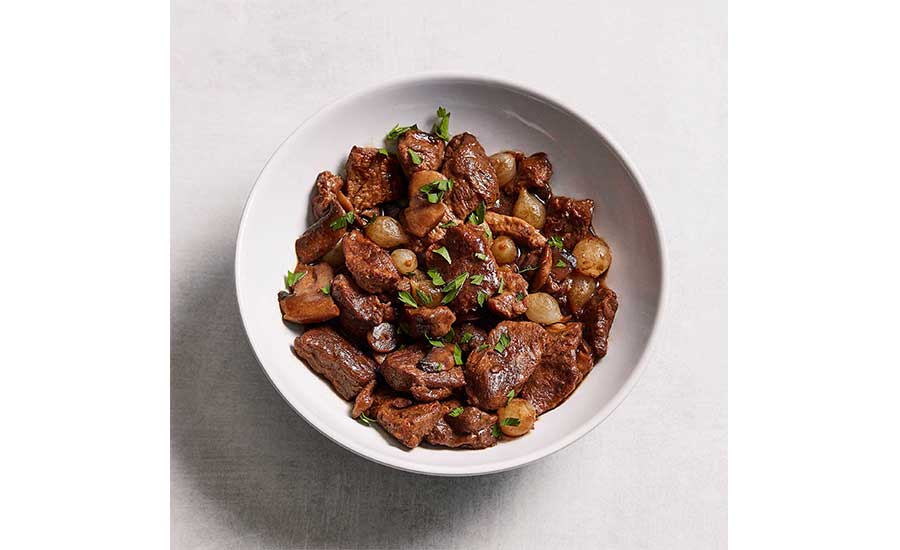
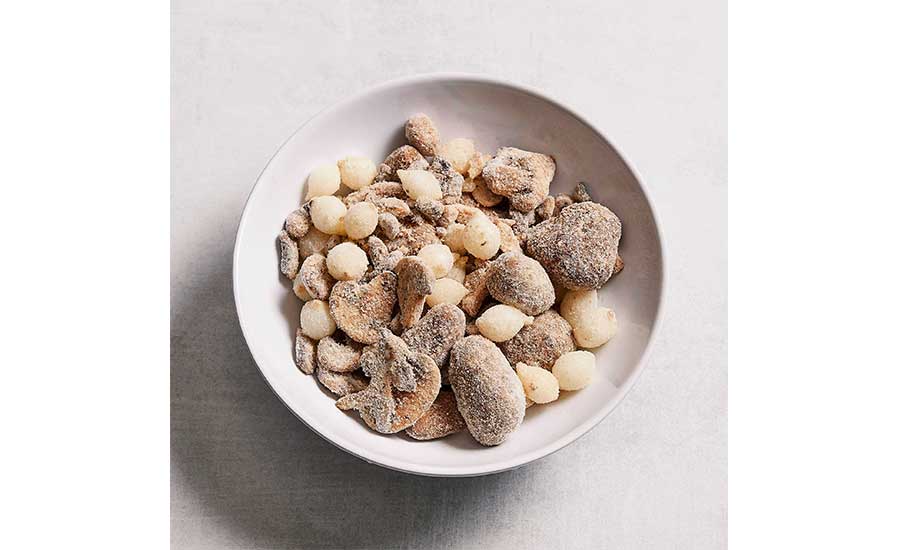
Cadence Kitchen’s liquid nitrogen flash-freezing process retains nutrients, texture and flavor, allowing for more complex dishes to be created.
Just Made
Walter Nimocks, Founder & CEO
How it began: We founded Just Made on the idea to introduce the “secrets of the tropics” to North American consumers. Having lived and worked for nearly a decade in South America, my wife (and Just Made Co-Founder) Norka and I were impressed with the remarkable variety and nutritional properties of tropical fruits. Juice is part of nearly every meal in Latin America. When we lived there, juice accompanied our meals at breakfast, lunch and dinner, and there was always something different and unique. For breakfast we may have a blend of guava and orange juice, for lunch it was passion fruit and then for dinner we might have pineapple juice, or something more exotic like tamarind, curuba or guanábana. Many of Just Made juices were adapted from popular blends in Central and South America, as well as the Caribbean, and were further developed at Texas A&M University’s Department of Nutrition.
At a Glance
JUST MADE
HQ: Houston, Texas
FOUNDED: 2017
DISTRIBUTION: 1,000 points of sale nationwide, plus DTC and e-commerce options
PRODUCTS: Wellness-focused HPP tropical juice blends
EMPLOYEES: 10, projected to 16 in 2021
FINANCIAL GROWTH: 300% YOY sales
Why we’re different: If you compare us to many national brands, our juices contain half the calories and sugars. One of the benefits of tropical fruits is that they are generally less sweet and more nutrient dense than apples and grapes, for example. Plus, many consumers, particularly Gen-Z and Millennials, are open to trying global flavors. Younger consumers are driving the trend towards global flavors and exploring new cuisines and experiences.
How we use technology: We make all our juices in our facility in Houston, Texas, and then we take them to Texas Food Solutions (TFS) on the west side of town to further process them using high-pressure processing (HPP). TFS has been great partner for us and we consider them an extension of our own operation.
Our sustainability goals: First and foremost, we seek suppliers that are willing to be transparent with us. Before we start a relationship with a supplier, we send them an exhaustive questionnaire that asks about their soil management practices, how they treat their workers, the minimum age at the plant, water consumption, post-production water treatment, and more. If they’re unable to satisfactorily answer these questions, we move on to find a supplier that does meet our standards.
Many of the ingredients we purchase are NOP organic, but we’re not yet able to source everything organically. About 65% of our ingredients in terms of volume are organic, but of course that’s not enough to make a claim on the label. We would like to convert to 100% organic by 2022, if we can still keep our total cost-per-unit in check. That means we will have to find other efficiencies in the business to offset the higher costs for organic ingredients.
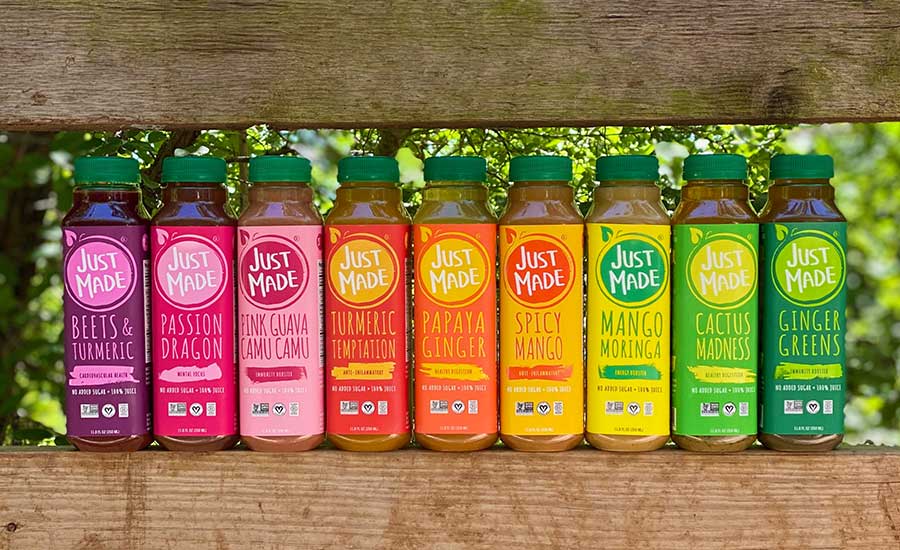
Ingredients for Just Made’s juices are sourced from Mexico, Nicaragua, Ecuador, Peru, Brazil, and the U.S. The growing company imports directly from suppliers in Latin America to the Port of Houston.
Another area where we hope to make progress is with our bottle. HPP requires a flexible container to work properly, and it must be able to withstand 6,000 bars of static pressure for up to three minutes. Glass is out of the question; Tetra Pak would get crushed immediately, as would aluminum cans or bottles. That leaves plastic bottles as the only option currently. We’re presently evaluating plastics made with sustainable materials, as well as labels that can withstand HPP and still be easily removed so the bottle can be recycled.
Finally, our corrugated cartons are made from 60%-70% recycled material, and we’re exploring purchasing our energy from sustainable sources or purchasing carbon offsets.
Where we give back: Just Made created a fund to benefit farmers and their families who produce our raw materials called the “5 Cents For Teachers Foundation”, where we give back 5¢ of every bottle sold to support teachers and schools in our source communities. We firmly believe that a good education is essential to having a meaningful and interesting life, however one wishes to define it for themselves. My wife Norka worked in education in South America as well as here in the States, and we made education a priority while raising our own children.
Forecast for our future: We have two new juices planned for January 2021, and will launch multi-serve bottles of existing juices in January. We also plan to open a forward distribution center in the Northeast, and by Q2 we may dust off our plans to expand foodservice sales in other Texas cities, such as Austin, Dallas and San Antonio. We also have new products in development that we plan to launch in late 2021, that are complementary to the brand, but outside the refrigerated juice segment.
Verde Farms
Dana Ehrlich, Founder & CEO
How it began: My path to founding Verde was definitely an unexpected one. I began my career as an engineer and product manager working for companies in Silicon Valley. In 2002, I deferred admission to business school to backpack around the world for 13 months, and the following year, traveled to Argentina as part of an MBA program. My intention was actually to start an adventure travel company, but that goal took a turn after an amazing experience I had at an estancia in Buenos Aires’ lowland pastures.
At a Glance
VERDE FARMS
HQ: Mullica Hill, New Jersey
FOUNDED: 2005
DISTRIBUTION: 2,500 stores nationwide, plus e-commerce and foodservice
PRODUCTS: Grass-fed, pastured-raised organic beef
EMPLOYEES: 75
FINANCIAL GROWTH: 31% YOY sales, approaching $100 million
Seeing how different traditional, grassland-centric gaucho methods of raising cattle were from the conventional feedlot-based meat industry I knew in the U.S. was inspiring, and I was also floored by the quality and flavor of the pasture-raised beef. That personal, cultural food experience is responsible for redirecting my career to start Verde. I wanted to bring the joy of eating delicious, responsibly-sourced beef back to consumers in the U.S. because having experienced it firsthand, I didn’t see a reason why exceptional flavor couldn’t go hand-in-hand with exceptional sourcing.
Why we’re different: Our foundational differentiator is of course our sourcing, which exemplifies our respect for the animal, the environment, and farmers. Raising cattle on 100% native grass pasture, while taking chemical antibiotics, hormones, fertilizers, and pesticides out of the equation, is simply better for the health of the animal, land, and consumers. We’re also much more than a beef supplier. We work as a fully integrated partner to help our customers inform their merchandising and sales programs through collaborative marketing, data insights, and educational materials for their sales team and consumers.

Verde’s beef is 100% grass-fed and pasture-raised, sourced from family farms in Uruguay, Australia, and North America. Those farmers use animal welfare standards approved by Dr. Temple Grandin.


How we use technology: We have a custom, integrated Salesforce-based ERP system that provides real-time tracking of all raw material and finished goods as they are produced. This ensures enhanced traceability through extremely detailed records of what raw materials are used and when. Our high level of visibility drives accuracy and production, allowing us to maintain a very high fill-rate percentage. Verde also has a comprehensive HAACP plan and X-rays all incoming material to both ensure product specification accuracy and enhanced foreign object screening.
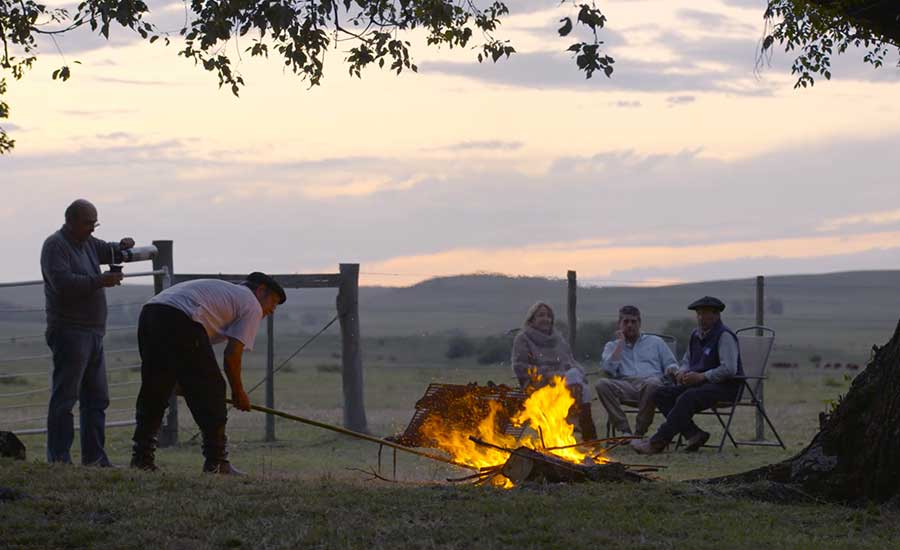
Verde’s founder Dana Ehrlich was inspired to start the company after traveling to Argentina and observing how gauchos there raised their cattle.
Our sustainability goals: Verde’s focus on environmental impact begins far before processing, as it’s just one element of a product’s full supply-chain journey. All Verde’s cattle are 100% grass-fed and 100% pasture-raised, never treated with antibiotics or added hormones, and 90% of our beef is USDA organic certified. Through regenerative agriculture, pasturelands benefit directly from cattle grazing. In Uruguay, for example, the land is also natively adapted to the mild local climate, so chemical fertilizers, pesticides and irrigation are not used to maintain them. Cattle have been raised on pasture there for more than 400 years.
From a transportation perspective, our cattle in Uruguay spend the entirety of their lives on one family farm before slaughter. For processing, the beef is transported by ocean freight which is very efficient from a carbon use basis. Counter-intuitively, conventional beef that’s born, raised, slaughtered, processed, and sold all within the U.S. can actually have a higher transportation footprint.
Our top-selling product in 2020: Definitely our organic ground beef. Overall, ground beef’s versatility, enhanced by our high quality and value-based standards, has always been a consistently high seller for us. It’s also stock-up friendly and freezes well for consumers to have on hand to pair with a rotation of recipe ingredients as meal patterns change.
Forecast for our future: We’re excited to keep our growth momentum going strong in 2021. We’re expanding our branded products across the portfolio from organic ground beef to our new Simply! range in grocery, club and natural/specialty channels. Our team is growing as well— we’re adding several key roles in sales, marketing and operations, including a Chief Sales Officer and Director of Product Management. We’re also looking forward to sharing the good word about Verde through our first advertising campaign. RFF


